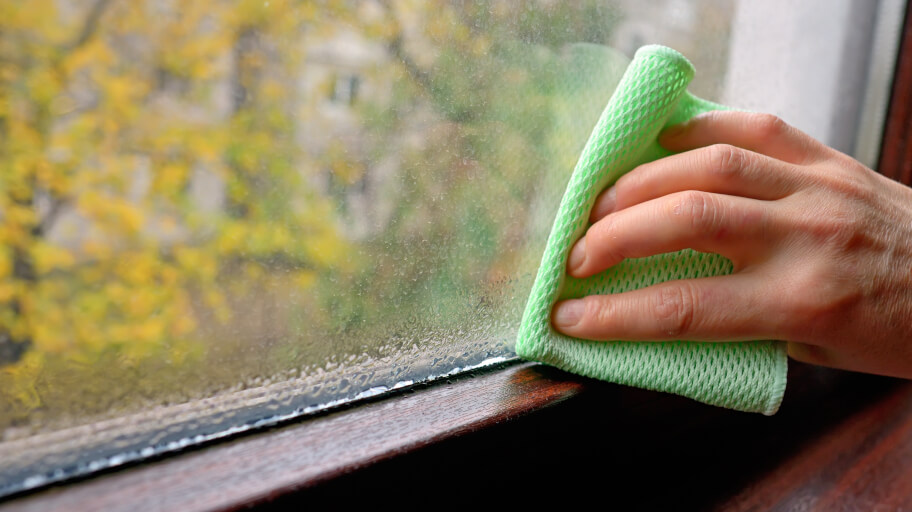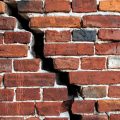
Moisture can do some real damage to your property. Not to mention the mould that can potentially hurt your family’s health. However, when it comes to reducing that moisture, a dehumidifier is not always an option. While not everyone can afford such a device, getting one may also influence your electricity bill. Therefore, we’ve put together a guide with alternative ways to try to remove the humidity from the rooms of your home or at least lower it significantly, depending on the state of the property.
What are the risks of living in a humid home?
A lot of people do not take the matter seriously until they’ve lived in a highly humid property for a while. By the time they realise there is a problem, some unpleasant consequences of the constant moisture exposure might have already developed. So, it’s good to know early what are the risks of not reducing the moisture in a room as much as possible.
- It creates a favourable environment for mould to develop and grow quickly.
- Inhaling mould spores is bad for your health and could contribute to the development or complication of allergies, asthma, rhinitis and other similar conditions.
- Moisture can soak into furniture, wooden items, carpets, rugs and other things, ruining them for good.
- Pests such as termites and dust mites will be easily attracted to your home.
- Damage to paint and wallpapers can be also a result of the humidity.
Common signs of high level of humidity
If you are living in a highly humid home, then you will certainly feel it at some point. However, if the levels are not that high or you’ve just moved into a new place, then it may not be as obvious. Just to be on the safe side, consider the following signs of moisture’s presence:
- Mould – While small mould spots in the bathroom and kitchen are fairly common as a result of the use of these two room, noticing large build-ups in miltiple areas of the house is allarming. You may notice dark spots on the ceiling, walls or even wallpaper. Mould can also develop on carpets, mattress and furniture, which remain damp as a result of the high levels of humidity in the room.
- Constant unpleasant odour – It is most distinguishable when you’ve been outdoors for a few hours and then you get inside. If the heavy musty smell remains present all the time and you can sense it even in your clothes, then do not try to hide it with candles and the likes, but look into what’s causing it.
- Heavy breathing – While people with asthma or allergies will likely sense the difference in the air quicker, anyone else staying in a moisture-rich area for long periods of time can also find it hard to breath, get a headache, stuffy nose, etc.
- Condensation – If you often notice water collecting at the bottom of your windows, it is possible to have a problem with humidity. However, if this happens only during the colder rainy months when there is insufficient ventilation indoors, then you may simply have to open the window more often. Speaking of windows, keep in mind also that condensation could be a result of an improper installation of the window frames. You can have a specialist check on them.
- Water marks – While a pipe damage is not always obvious, the consequences of it will definitely become visible at some point. Water leakages either from the plumbing or as a result of a storm will result in wet spots appearing, usually on ceiling or walls. As soon as you see them, you need to investigate and seek help if necessary.
Professional plumber available close to you for a check-up and repairs!
Contact usFor questions about the services we offer visit our main site.
Removing humidity without a dehumidifier (Indoor & Outdoor Tips)
If you already recognise the signs of moisture around the house, then it is time for the next step – looking into the best ways to dehumidify the rooms naturally. One important thing to remember is that the causes for the high levels of moisture could be internal, as well as external. Don’t worry we will tell you exactly where to look and what to focus on! Let’s dive into it!
Keep humidity in check
To moisture-proof your home successfully, you first have to figure out where most of the humidity comes from. Is it the bathroom, the basement, the kitchen or the laundry room? Investigating and marking down the signs of any damage or mould will help you get a full image of the extent of the problem and determine easily what’s causing it.
There are moisture detectors on the market, also known as hygrometers if you wish to be scientific about it, but we find that with simple observation the task can be also achieved.
Increase ventilation
Ventilation is probably the biggest factor in keeping your home dry. A good airflow allows moisture to evaporate quickly and good ventilation allows it to be lead out of your house quickly. While the colder months do not predispose people to leave their windows open for long periods of time, an HVAC can also help here. Keeping your HVAC in optimal performance can rid your home of as much as 80% of the moisture. We recommend yearly duct and unit inspections to ensure your system is up to the task.
Dry wet areas immediately
Never let wetness linger. This can lead to mould formations. Whenever there’s a spill or leak in your home, see to it as quickly as possible. Indoor plants can contribute to this as potting soil, depending on its composition, can retain a lot of moisture.
If you keep a lot of plants in the house, always keep them in airy rooms where moisture can’t accumulate. Two or three plants aren’t a big deal but if you care for a larger number, the best course of action is to spread them around the house instead of bunching them up together.
Vent appliances to the outside
Appliances, such as the cooking stove and dryer, are a prime source of moisture. It’s advisable to set them up in such a way that they have an external vent. Range hoods for stoves already offer a good option for cooking. However, to get the most of them, you have to ensure the external vent isn’t close to a surface where the steam can condense into water.
Dryers can be as good, if not even better contributors to humidity, depending on the size of your laundry loads. There are options on the market that allow for easy venting. If there isn’t a way to directly lead the moisture from the drying clothes outside, make sure your laundry room is properly ventilated.
Direct water away from your home
Naturally, the best way to moisture-proof your home is to not let water get inside. You can try sloping the ground near the walls of your home away from them, so the incline naturally leads the water away from the walls.
If water pools around the walls after a rain, you should immediately seek to remedy that. Air conditioning drain lines should be lead away too. It may not seem like it’s expelling much water but over time the effect of constant dripping stacks up. A french drain around the base of your home can help greatly with this.
Clean your gutters
Your gutters are very important in regards to getting rid of the humidity. In order to function properly, however, they should be maintained regularly.
Ensure the fittings are intact and that there are no cracks through which water can drip. They also have to lead water as far away from the facade as possible. It’s always better if they connect directly to a drain pipe. Even if they are in perfect condition, you still have to keep them clean. Debris and junk gather in them throughout the year and it won’t be long before they clog the gutters, retaining moisture in the process.
Choose a waterproof outdoor coating
There is a number of waterproof products on the market that are easily applicable to external walls and ward against moisture. Take these into consideration:
- Waterproof paint – It is similar to vinyl paint, but specifically designed to offer improved water resistance. Always go for the breathable variant. While it gives your walls the chance to breathe, it also allows moisture to escape through evaporation. It can be applied on previously painted surface, but keep in mind that this could diminish the “breathing” effect.
- Concrete waterproof coating – This product is applied one time only to concrete and masonry like cement and does. It’s advisable to coat the surface while bare but it can also be applied to already painted surfaces.
- Silicate-based concrete sealant – This product reacts with masonry and conrete to form a waterproof coating. It can only be used on fresh walls, so it won’t work on painted or already sealed walls.
Is your home seriously affected by humidity?
A professional handyman can help with renovation, plumbing, painting and more!
You can book our handyman services in Melbourne, Sydney, Brisbane and Perth!


